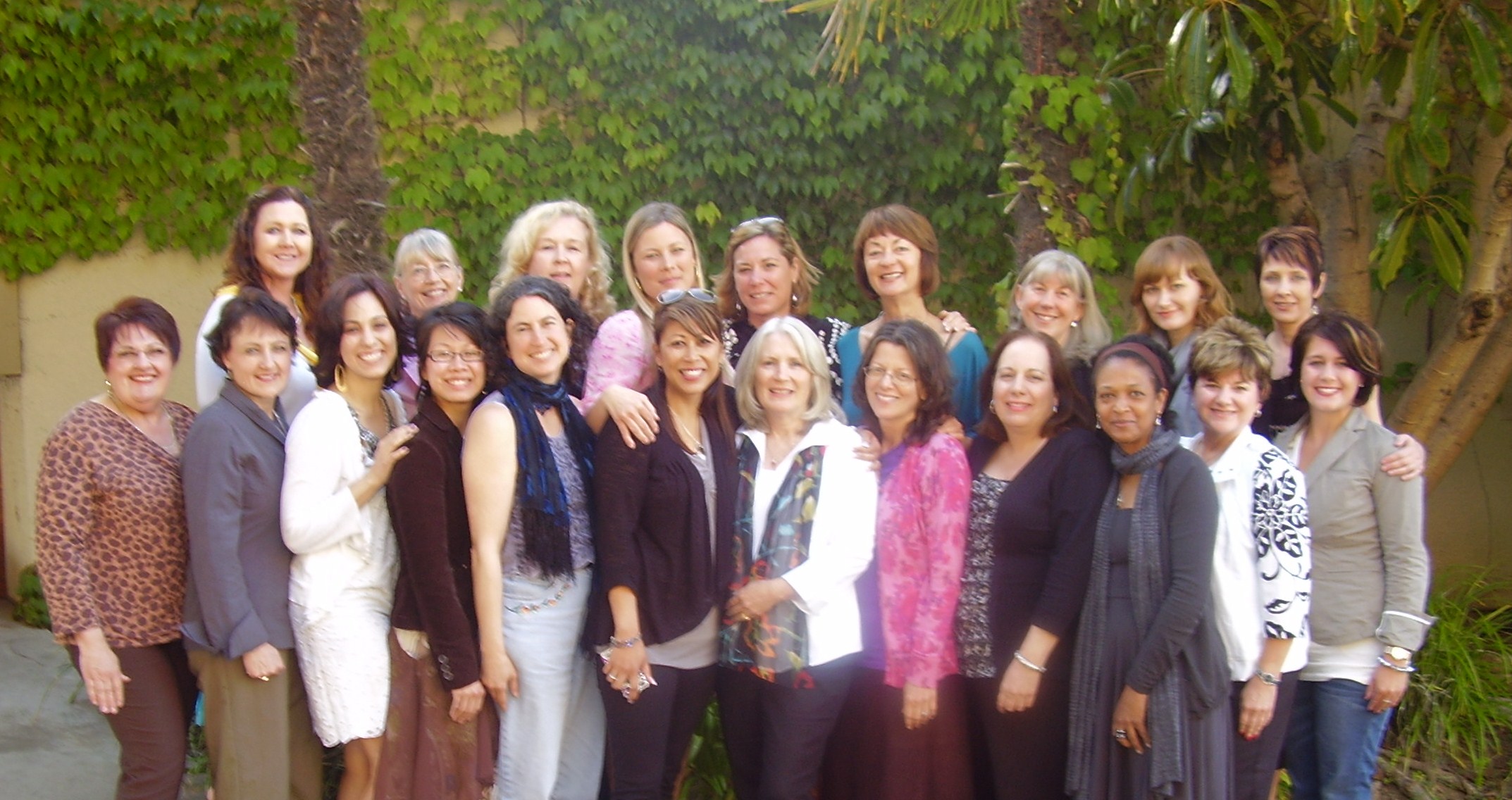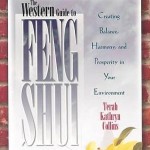Nourishing and Controlling the Five Elements
The Five Elements in Feng Shui
In Feng Shui, the elements Wood, Fire, Earth, Metal, and Water are considered the basic building blocks of everything physical on the planet. They manifest in countless ways and combinations all around us. Feng Shui observes that human beings are made up of all Five Elements, and therefore, we are most comfortable when they’re all present in our homes. The fastest way to learn how to work with the elements is to observe them in your home.
Although many people can sense when an environment is out of balance, they often don’t know exactly how to fix it. Would red or blue be good here? Should the table be round or rectangular? Is a mirror or artwork best there? Questions such as these are easily answered when you know how to read the elements, making them one of your most intriguing Feng Shui tools. Learn how to recognize and combine the Five Elements, and you’ll be able to see exactly what each room needs to bring it into perfect balance.
Five Element arrangements can be made in any room and can be any size that’s appropriate for the space. I often suggest that people put together an elemental arrangement of objects in areas that need energizing, such as a garage, spare bedroom, or basement. This positive action marks the beginning of change and stimulates the Ch’i so that it’s easier for people to organize these areas.

“Fire” collage by Terah Kathryn Collins
The Nourishing Cycle of the Five Elements
When you bring the Five Elements into a room, you are tapping into their Nourishing Cycle, where each element feeds and sustains the other in perfect harmony. Water sustains Wood; Wood feeds Fire; Fire makes Earth; Earth creates Metal; and Metal holds Water. The Nourishing Cycle shows us how the elements strengthen and nurture each other in an endless regenerating sequence. When all five are present in an environment, a natural balance is achieved.
The Controlling Cycle of the Five Elements

“Earth” collage by Terah Kathryn Collins
In the Controlling Cycle, we see how the elements dominate and control each other. In this cycle, Woodconsumes Earth; Earth dams Water; Water extinguishes Fire; Fire melts Metal; and Metal cuts Wood. The Controlling Cycle is regarded as a powerful guide for establishing elemental harmony, and is present in many of the places we consider the most beautiful. A palm tree oasis in the desert is a perfect example of Wood consuming Earth, while a tropical island in crystal-clear water is essentially Earth damming Water. Nature constantly provides us with examples of how the Controlling Cycle of the elements can create harmony and beauty.
It’s also very useful to be aware of the Controlling Cycle when you’re balancing the elements in your home. When one element is especially dominant, the Controlling Cycle will show you the element that can quickly balance the Ch’i. Once you have balanced the dominant element with its controlling partner, you can turn to the Nourishing Cycle and further refine your elemental
work.

“Metal” collage by Terah Kathryn Collins
I worked with a home where the living room was dominated by Earth. The decor included square tile floors, stucco walls, dark beige-checked couches, brown chairs, small square area rugs in various earthtones, and many small earthenware accessories. The furniture was arranged in a tight square around a large rectangular table made up of ceramic tiles. On the wall behind the sofa hung a painting of the desert. So much Earth gave the space a heavy, boxed-in feeling, which matched the way the owners felt in their home.
To balance the Earth, they needed to first introduce the element that controlled Earth, which is Wood. They added turquoise pillows to the sofa, a large textured rug in blues and greens beneath the coffee table, and several large plants. Turning to the Nourishing Cycle, they fed the Wood element with Water by replacing their desert painting with a large mirror and adding a small tabletop waterfall. They also introduced the Metal element by framing that mirror in a gilt frame and arranging the plants in round metal pots. Lamplight, natural light, and touches of coral painted on their ceramics brought in plenty of Fire, which by nature strengthens Earth.
They also opened up the boxy “Earthy” furniture

“Water” collage by Terah Kathryn Collins
arrangement by turning the two brown chairs at a diagonal, giving them a peripheral view of the door. As a finishing touch, they ran a turquoise table runner diagonally across the coffee table to soften two of the corners. With these changes, their once-constricted living room became very comfortable, inviting a more spontaneous and enjoyable lifestyle.
Elemental extremes abound in our architecture and rooms.
Monochromatic motifs, and the constant repeating of one shape, are two things I often see in people’s homes. Although the effect may be perceived as quite trendy or dramatic, most people will not find comfort there, because on the elemental level, one is dominating while the others are missing. Remember, your ultimate goal is to bring all Five Elements into balance in every
room. It’s remarkable to witness the difference this makes in the perceived comfort of a room.
You’ll find much more information on the Five Elements in Terah’s book The Western Guide to Feng Shui, Room by Room.
Read More
The Beauty of Caring For Our ‘Stuff’
by alumna Ainslie Kincross
I’ve been pondering the value of caring for things (yes, for people too, but here, it’s about the things we live with).
When we abide by the “First Rule” of Essential Feng Shui – to live only with what we love – the quality of our connections with the things in our homes invokes caring for them: dusting them off, polishing them up, giving them just the right place, letting our gaze rest in appreciation on one here, another there…, fixing them when they’re broken, or perhaps lovingly gifting them to a new owner.
I believe these acts of ‘caring for’, or ‘tending to’, add beauty to the world. The Latin tendere means to direct attention toward. That core meaning forms a part of a family of words: extend, attend, intend…think even of a vine’s tendril growing toward the light. Attention is our creating energy. When the movement of attention is directed by love and appreciation, there is Beauty.
WSFS teacher Karen Abler Carrasco noted how the flow of caring attention moves through the Five Elements: “… cherishing something involves taking its entire essence into oneself through all 5 senses, which are the 5 Elements. When you love something, you look at it intensely (Wood), caress it (Fire), taste it or give it a home or container (Earth), smell it and let it evoke memories (Metal), and listen to it, letting it take you to the deeper parts of you inner self (Water). It inspires you to refill your life again with new projects and pursuits (Wood again) and around we go in the nurturing cycles of life.”
As she notes, the cherishing can be an inward flow (yin), while the outward act of caring for placing, cleaning, etc., is more yang in quality. It’s a complete and continuing circle.
Consider, alternatively, people who have no home environment to care for: refugees for example, or the homeless….or a person living in an institutional setting filled with things they have little or no relationship to. Caring for a cherished object is not an option. And then there are the many whose lives are so busy that, like a wild river at flood stage, they rush by the things in their homes on a daily basis with no time to care for, or tend to, these things.
 Care-less living results when attention is continually commandeered by outside objects, events or circumstances instead of being consciously generated and directed from within, following the tendril of love outward. Probably the most evident example currently is the ever-demanding smart phone that interrupts our face-to-face conversations, and with its incessant “notifications” wears down the use of deliberate will to direct attention toward beautiful caring.
Care-less living results when attention is continually commandeered by outside objects, events or circumstances instead of being consciously generated and directed from within, following the tendril of love outward. Probably the most evident example currently is the ever-demanding smart phone that interrupts our face-to-face conversations, and with its incessant “notifications” wears down the use of deliberate will to direct attention toward beautiful caring.
But we now know what happens when prisoners have even a single plant, or a food garden, or a service dog in training – to care for! It teaches them about the goodness in themselves, and introduces some Beauty in a difficult environment. And now that most elder housing allows residents to have their pets to care for: people connect more, their eyes light up… they live longer!
As feng shui practitioners, we know what’s possible when we create our homes as a sanctuary and introduce stillness, and time contemplation. There is beauty. WSFS graduate Sharyn Jordan describes this beautifully: “I am spending my cozy evening in a comfy chair with a great book by one of my many favorite authors and a cuppa hot tea. Panning my lovely room, I feel incredibly blessed; all 5 elements are in and at play. The celebration of caring for one’s items creates a beautiful calm. In turn, it allows us to connect with both its inner and universal peace.” And she notes that this experience allows us to return more peace –and I would add Beauty– to the world.
I think most of us who’ve opened the gate and started down the richly-laid path of feng shui have done so because we love beauty and want to surround ourselves and those we love with it. Caring for our things is the way we shape our homes and the world beyond them into Beauty, like loving gardeners. That’s the world we all innately move toward like tendrils on a vine…..
______________
Ainslie B Kincross PhD is a 2001 graduate of the WSFS Practitioner Training, a licensed architect (Colorado), and a lifelong student of Beauty in all its forms. She can be contacted by email through her website: www.intuitive-environments.com
Read MoreIf These Walls Could Talk by Alumna Laura Carrillo
If these walls could talk, they would tell you the story. My Feng Shui practice, Narrative Space, is based on the premise that your home, business, or any physical space has an energetic narrative that can be interpreted and edited through Feng Shui.
Art & Alchemy is my specialized area of Feng Shui. What is the story? Look around, it’s all there. The writing is on the wall, so to speak. People assume art is merely a picture or a painting or a photograph.
 What a physical space is communicating via its narrative is obvious to me, though it may not be to most people. Not everyone sees life through the same lens, so in some small way I can bring clarity and light to this subject. Universal consciousness aside, not everyone is paying attention to the signs or knows how to interpret them. I genuinely believe we all have this ability on a subconscious level, but that doesn’t mean it is reaching the conscious or mundane level. Feng Shui is a physical language which helps interpret those signs.
What a physical space is communicating via its narrative is obvious to me, though it may not be to most people. Not everyone sees life through the same lens, so in some small way I can bring clarity and light to this subject. Universal consciousness aside, not everyone is paying attention to the signs or knows how to interpret them. I genuinely believe we all have this ability on a subconscious level, but that doesn’t mean it is reaching the conscious or mundane level. Feng Shui is a physical language which helps interpret those signs.
Even if you don’t know anything about Feng Shui, you can look at an image and interpret it on a gut level. You can see what it is communicating and ascertain whether it is positive or negative. Think of art in terms of the narrative or story, then decide if that is what you want your story to be. Some people like dark imagery because they think it’s cool or profound. Since my goal is to help people create a positive setting and narrative, I wouldn’t necessarily recommend such art.
Art provides your space with visual cues that create a narrative. The walls are figuratively telling your story. What do you want that story to be? If you curate the art from a Feng Shui perspective, there are specific areas of a space that pertain to specific areas of life, such as your career or love life. It helps to know the area of life in which you are placing a piece of art, because context is important.
The Bagua is an energetic map in Feng Shui that represents nine life sectors called “guas.” These include Prosperity, Fame, Love, Family, Health, Children & Creativity, Skills & Knowledge, Career & Travel, and Helpful People. The Bagua is the most important tool in Feng Shui for curating and interpreting the narrative.
If you place romantic art in your Skills & Knowledge area, you may not be making the best use of the art. It could be better placed in your love area. That said, at least it is positive imagery, and there is still benefit from having Skills & Knowledge in the love department. It is preferable to curate for maximum benefits, though. That’s where a consultant can really help.
When I wanted greater success in my career, I thought about what kind of imagery would help. Water is the element associated with the career gua and it also represents abundance in Feng Shui. With this in mind, I painted a waterfall and placed it above my desk in my career gua. Suddenly, I had more Feng Shui gigs than ever, and my cash flow increased significantly. This is an example of the way art supported my intentions and served me in a positive way.
Think about art as a way of foreshadowing your story. You can play a conscious role in how your story plays out. It’s very empowering! It not only works from an energetic perspective, but from a psychological one. Visual cues feed your subconscious mind. Your mind processes the information and works diligently to manifest the story being told. That said, be conscious of the fact the story serves as a mantra that will ultimately manifest itself.
I once worked for a business that sold art. Some of the art was positive and beautiful, while some was dark and depressing. A series of pieces depicted the tragedy of the Twin Towers. I lived in New York during 9/11, and know first-hand the impact that it had on business and the lives of New Yorkers. It was one of the most depressing chapters of my life. I couldn’t understand why these pieces were so prominently featured. One of these pieces was placed in the career gua of the business. I told the owner what it represented symbolically and how it wasn’t good for business, but my words fell on deaf ears.
That series of paintings was not only bad Feng Shui for the business, it served as a powerful alchemy that depicted a less than positive outcome. Additionally, that business displayed a picture of a dead whale carcass decomposing, and another of a capsized ship. While there were some positive images, the overall story being told did not have a happy ending. From a Feng Shui perspective, the way the art was curated was disastrous.
The business had a number of other Feng Shui issues. Most notably, the bathrooms were located in the Prosperity gua, representing money going down the drain. There are cures for this. I tried to offset the energetic loss by hanging crystals above the toilets, but the owner removed them. Crystals alone cannot compensate for every ill, but they can help remedy an energetic loss. They were a tiny edit in a space that needed a big rewrite. When I discovered the crystals had been removed, I also decided to leave. Very shortly after this, the business quickly and dramatically imploded.
I learned a lot from that experience. I was able to see first-hand how powerfully the imagery and narrative of a space can become its own self-fulfilling prophecy. The impact and power of art on the narrative of a space, and the people who inhabit it, is an area of Feng Shui on which I am particularly focused.
Art possesses what I like to call magical properties. These properties can be used for good or ill, and I have highlighted examples of both. When you choose art, you will be drawn to certain pieces. Take stock of how a piece makes you feel and whether it is a feeling you want to bathe in every day. You may be drawn to darker pieces because there is something relatable in them. We can all relate to pain and suffering, but that doesn’t mean we need to live immersed in it.
They say happiness is a choice. Choose to tell your story with visually inspiring and triumphant imagery. To learn more about my work with Feng Shui, Art & Alchemy visit Narrative Space.
Written by Laura Carrillo
Photos by Sonja Reed
Read MoreEssential Feng Shui Tips: Mirrors
Feng Shui Definitions
Mirrors activate, expand, and circulate Ch’i throughout interior spaces. When properly chosen and installed, they can visually enlarge small rooms and double beautiful views.
Read MoreEssential Feng Shui Tips: Collections
 Collections
Collections
Feng Shui Definitions
In our materially abundant culture, it’s easy to collect items of interest. Some collections such as crystal, jewelry, and antiques involve making an investment with every new piece, while other collections are meaningful because of the memories they hold. Whatever you collect, make sure you are managing it, and not vice versa.
- Determine if you are still interested in your collection. People often lose interest in the items they’ve collected, in the same way that children outgrow certain kinds of toys. Let go of collections that no longer interest you to make plenty of room to pursue your new interests.
- Decide if there are pieces that no longer belong there. As your collection evolves, make room for the new by sorting out the ones that no longer fit.
- Enjoy your collections. This keeps the house nourished with the Ch’i that comes from loving what you live with. You may have room to display only part of a collection at any given time. Revolving your collection renews it as you circulate pieces from storage to display area and back again.
- Like art, collections can be lent to friends, the local library, museums, hospitals, schools, or galleries so others can enjoy them. When you are ready to let go of a collection permanently, do so in a way that honors the time and work you put into it. This will give you a sense of completion and free you to enjoy your new interests.









